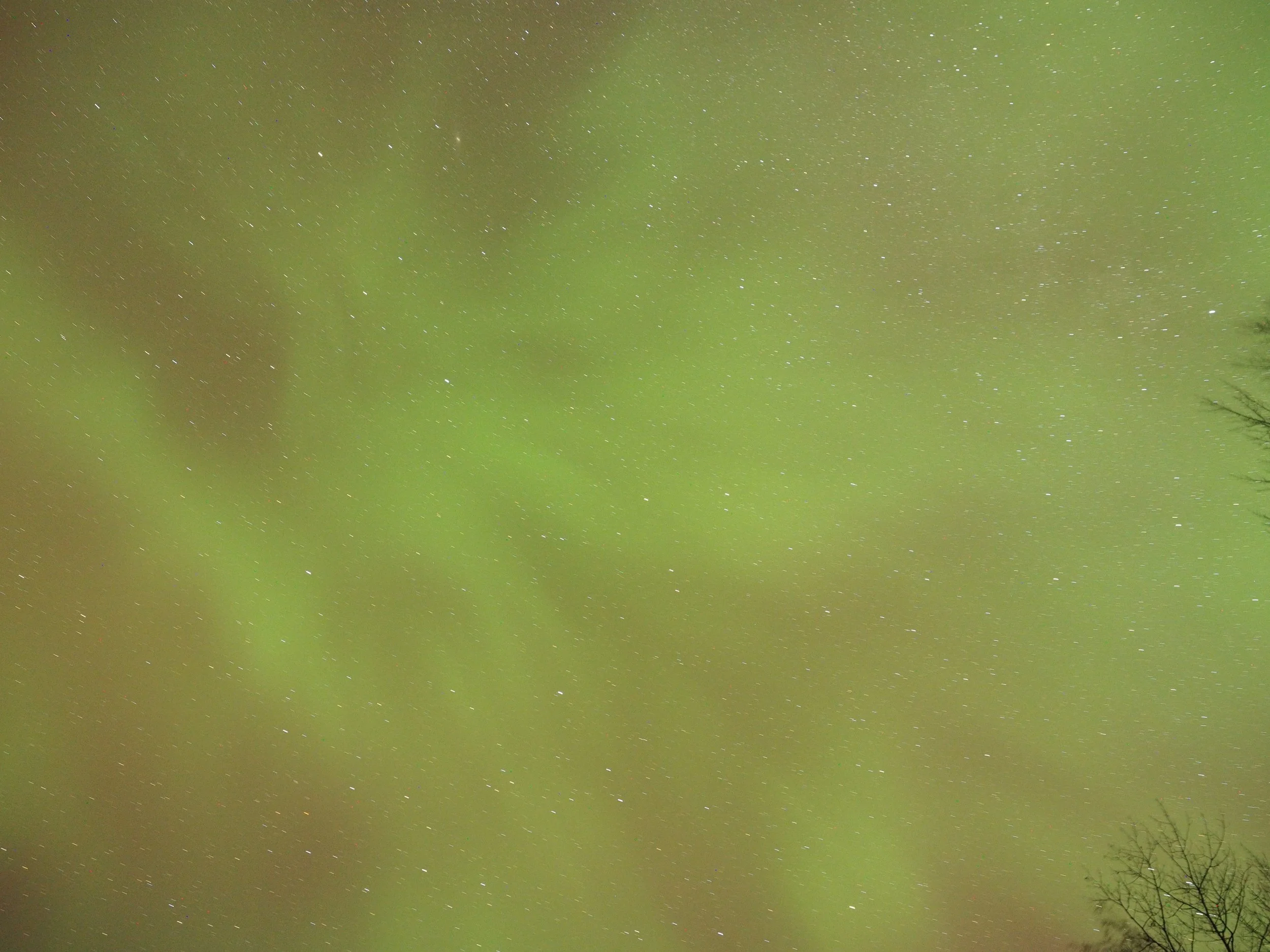An Evening with the Aurora
An intense solar storm hit on November 11 and 12—which means the Aurora Borealis made an appearance in a big way! I’ve seen the northern lights a few times in my life, but nothing like the spectacle we were treated to in northern Michigan on Wednesday night.
Did you catch the northern lights this week? It was seen much further south than usual, so it was a real treat for stargazers all over the U.S.
I scrambled to find my old astrophotography setup: the right DSLR camera lens (wide aperture a must!), tripod, and manual settings cheat sheet. After moving a few months ago, this was more challenging than I expected. In my experience, the northern lights make their appearance when I least expect them—so of course I wasn’t totally prepared.
Luckily, we didn’t need to travel far to watch the show. Now that we live in Michigan’s Keweenaw Peninsula, we’re located far enough north to have better chances to catch the lights. All we needed to do was turn off the porch lights and stand in the driveway!
I was able to find my tripod and wide aperture lens, but sadly misplaced my settings cheat sheet. Despite being a little rusty with getting the camera ISO just right, I still captured some of my best Aurora photos! This isn’t saying too much compared to the professionals on Instagram, but I get better with each attempt.
Astrophotography Cheat Sheet:
Aperture/F-stop: As wide open as your lens allows. If your lens can go up to 2.8mm or wider, that’s key to gathering as much light as possible. The lower the number, the better!
Shutter Speed: 5” to 25” (longer can cause blur/star trails)
Recommended ISO: At least 1600 ISO, probably more! (This is the setting I forgot without my cheat sheet, but luckily the lights were bright enough that I still managed to capture them with only 1250 ISO)






Experts say this winter will be a historic high for solar flares and space weather. I am looking forward to being back in northern Michigan, so that we can make the most of this Aurora viewing season!

